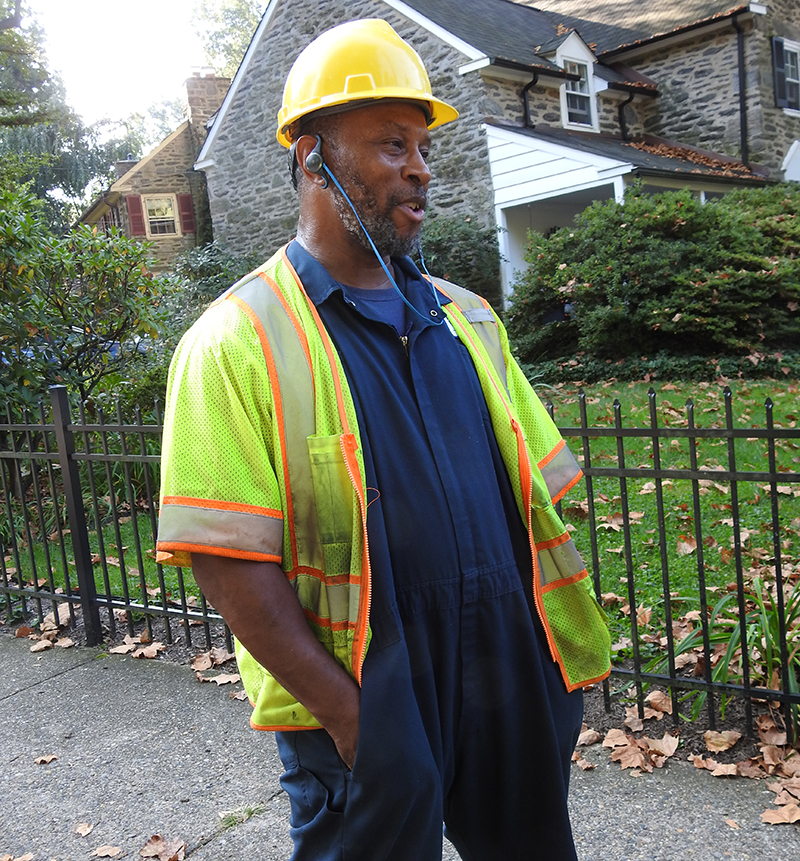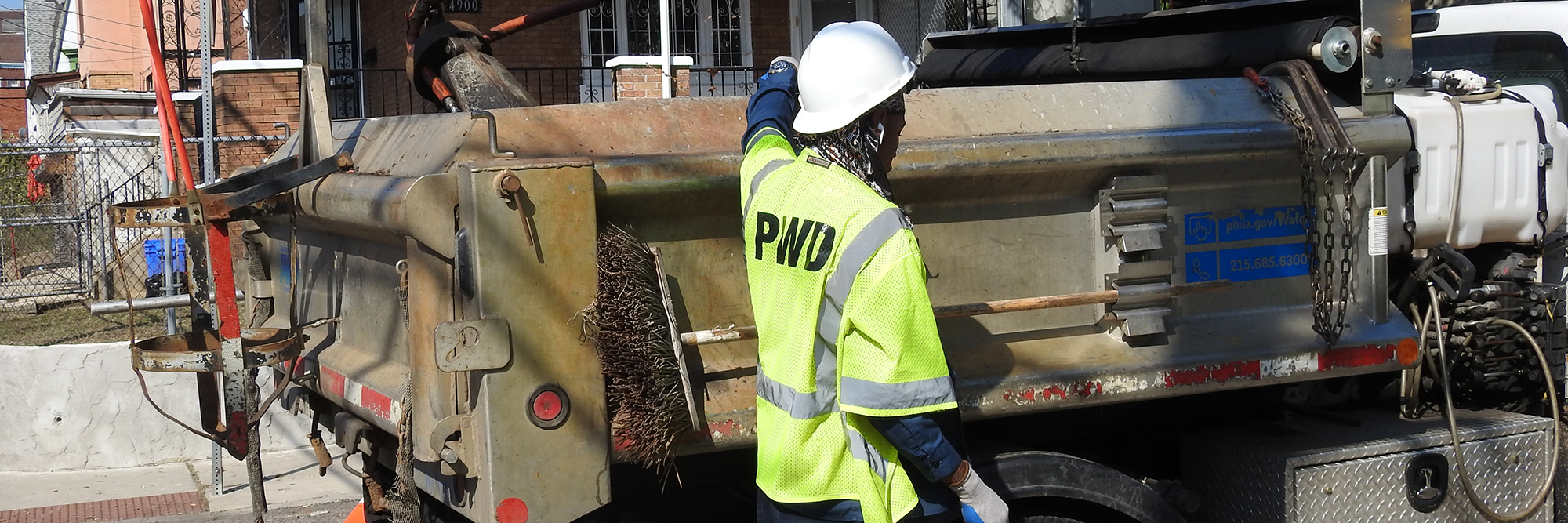We have about 70 people working the phones in our call center. Customer service often starts with them, but we are taking you behind the scenes and out into the streets to meet the employees who follow up. Today, meet the inlet crew:
When customers call (215) 685-6300 to report a clogged inlet, our Inlet Cleaning crews respond. When inlets—the drain on your block that lets water from storms flow into the sewer—become blocked by litter, leaves or snow, it can result in local flooding.
We ask you to help us by keeping drains in your area clear, especially in the fall, but we know it isn't always as easy as bagging some leaves. That's where the hotline and the Collector Systems Unit comes in.
Inlet Crew Spotlight

Heavy Equipment Operator Lance Johnson at the site of an inlet cleaning job on October 2, 2019.
@PhillyH2O Blog was out in the field last week following crews as they did their work, and we talked to Inlet Cleaning's Lance Johnson. As a heavy equipment operator, he uses a truck with a moveable, crane-like arm that drops a large claw into inlets. Once he grabs as much debris as he can, he lifts the claw up and drops the material in the back of the truck.
So, we had to ask Lance: has he ever tried his hand grabbing prizes at the arcade with the claw game? Here's his answer:
“I have to say, I have tried the claw game a number of times before. And, I would say I am pretty good…above average. Once you get it, it's basically the same concept as my truck.” — Heavy Equipment Operator Lance Johnson
A part of the Collector Systems Unit, the Inlet Cleaning crews do more than clean leaves and debris from sewer inlets. We spoke with the unit's Assistant Superintendent William Shields last week for some quick facts about these special crews, providing customer service on Philly streets night at day.
Inlet Cleaning Fast Facts:
- PWD’s Inlet Cleaning Crew has about 109 employees working to maintain +74,000 inlets.
- Found on nearly every block, these inlets either drain to the sewer system or to green infrastructure systems, like rain gardens or special stormwater tree planters.
- We have two different types of crews with different trucks and equipment, depending on whether they are cleaning a traditional inlet or a green inlet.
- A third crew specializes in installing anti-theft devices to deter metal scrappers from removing inlet covers.
- We have on average 36 claw trucks operating every day to clean out traditional inlets.
- We recently invested in 15 newer claw trucks. These are smaller than older models, cost about $80,000 less, and help us reduce fuel use and pollution that contributes to climate change.
- Most of the Inlet Cleaning work is for traditional sewers. Only three specialized trucks are dedicated to cleaning about 700 green inlets.
- However, green inlets get cleaned far more often – once a month. Unless it is in a flooding hotspot or we get a complaint, most standard inlets only need to be cleaned once per year.
- Crews typically respond to complaints about clogged inlets before cleaning those scheduled for routine cleaning.
- While our goal is to respond to customer reports of blocked inlets within three days, crews typically get to them faster – within 1.3 days, on average.
- Last year, we followed up on nearly 4,000 reports of blocked inlets and dispatched crews to help.
- At our Fox Street facility, we opened a dewatering facility 5-6 years ago. Just by reducing the weight with drying techniques, we reduced the Inlet Cleaning crew’s trash and debris disposal costs by 40 percent!
